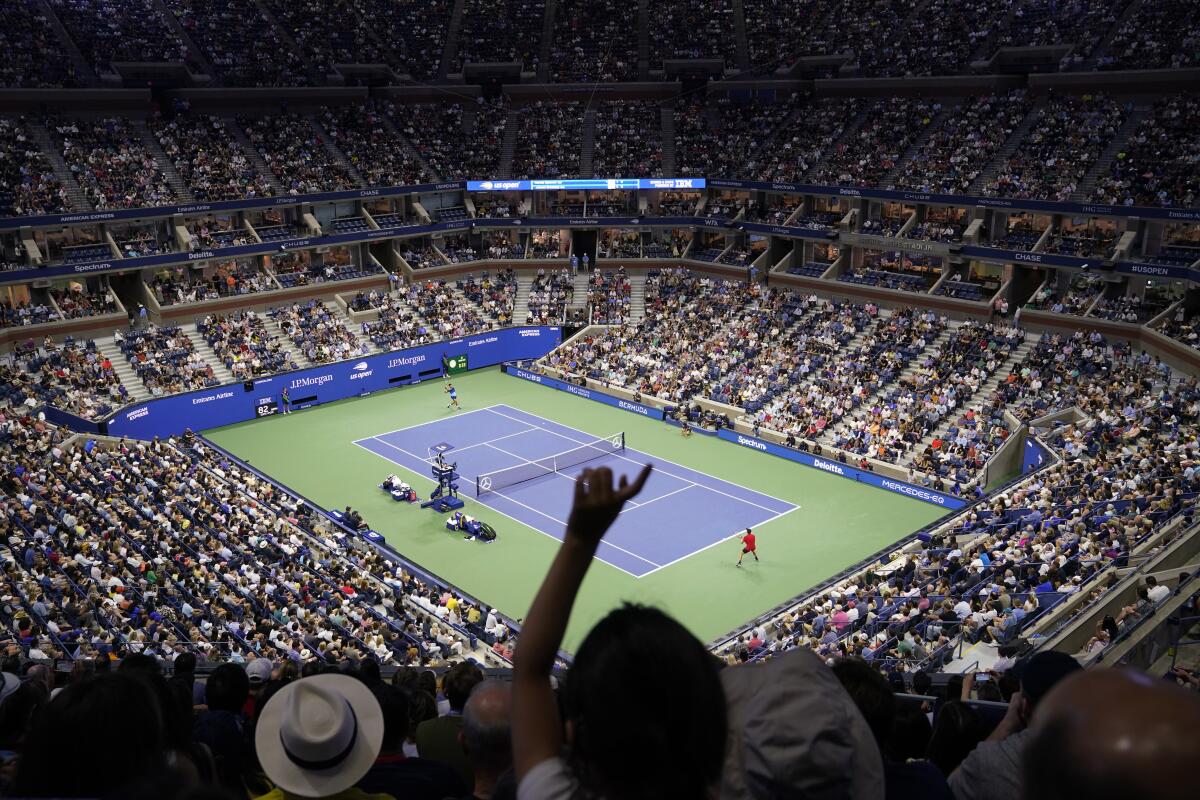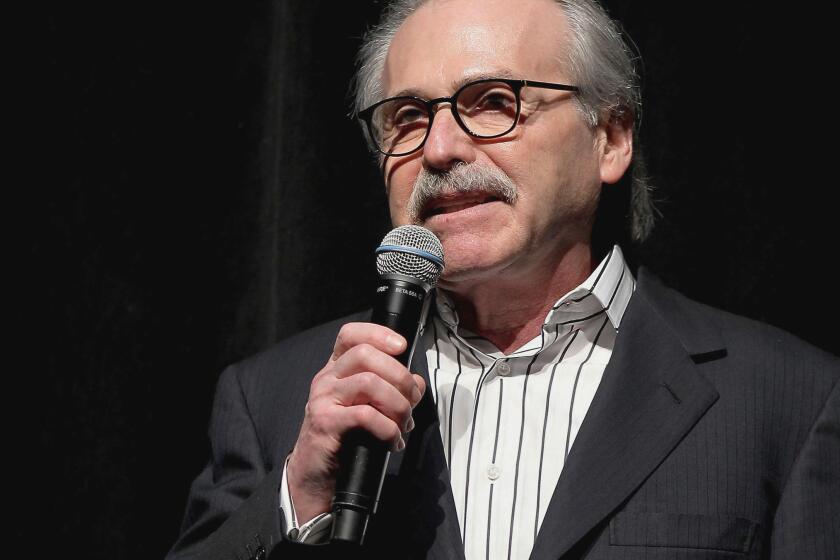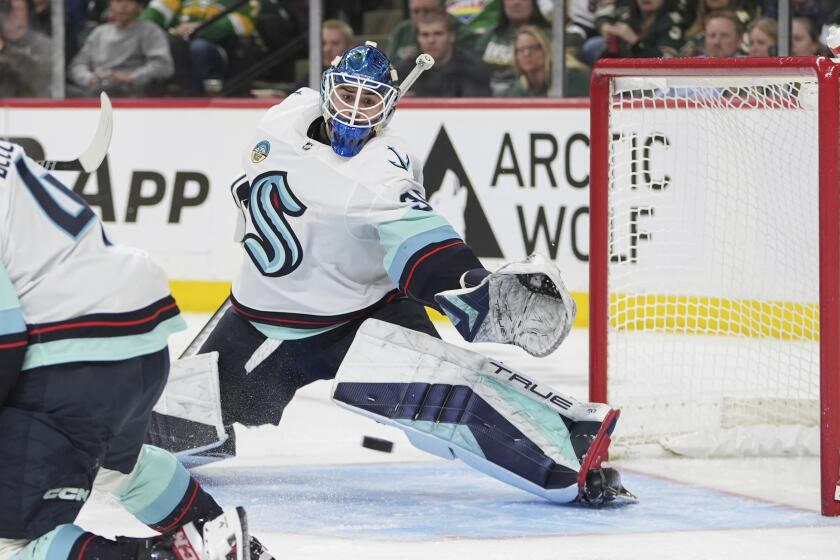The four Grand Slams, the two tours and Saudi Arabia are all hoping to revamp tennis

On this, the leaders of tennis can agree: There is more money out there to be made. And they see eye-to-eye on this, too: The sport’s current structure could stand to change.
The how’s and why’s and when’s of it all? Well, that’s open to discussion — and there is plenty of that happening now behind closed doors, conversations and negotiations about the future of tennis among the folks who run the Grand Slam tournaments and other events, the women’s WTA and men’s ATP professional tours, the players, their agents and others with a hand in the sport, including Saudi Arabia’s Private Investment Fund (known as the PIF, it is the entity behind LIV Golf ).
There are two main proposals, both aimed at increasing revenue, seeking support at the moment: One, driven by the four Slams, would get rid of the current WTA-ATP structure and create a new Premier Tour (that’s the working title) for roughly 100 women and 100 men and a lower-level Contenders Tour (another working title) with 75 to 100 tournaments open to roughly 200 women and 200 men, with all events hosting both genders with equal prize money; the other, driven by the ATP, would form a venture with the WTA to sell media rights and sponsorships but keep two separate tours for playing purposes, while bringing in an infusion of cash from the PIF in part by placing a Masters 1000 event in Saudi Arabia.
Why is this happening now? The sport is “underperforming,” to use a word offered by Lew Sherr, the CEO of the U.S. Tennis Association, which runs the U.S. Open.
And that, he explained to The Associated Press this week in a joint interview with Sally Bolton — CEO of the All England Club, which runs Wimbledon — is why the four most prestigious and most-watched tennis tournaments, a quartet that includes the Australian Open and French Open, are working together in what Sherr called an “unprecedented way” in an effort “to unlock what we think is an enormous potential.”
Making tennis more fan-friendly — an easier-to-understand and shorter season, for example, and more consistency in TV broadcasts from week to week — could bring roughly a $1 billion increase in annual value, on top of the sport’s current revenues of about $2.5 billion, Bolton estimated, by way of rights packages and increased sponsorship deals that could arise from more viewership.
Bolton acknowledged nothing will happen “anytime before 2026,” but said she thinks the project “can move relatively quickly” if they get others to buy in.
“The good news is we’re sitting on the cusp of what could be generational change for the better for a global sport,” Ahmad Nassar, the executive director of the Professional Tennis Players Association, a group co-founded by 24-time Grand Slam champion Novak Djokovic to represent the sport’s athletes, said when asked for a general assessment of the state of play for tennis. “And that’s exciting and a huge opportunity — as long as we don’t squander it.”
The ATP and WTA say they are looking into forming a combined “commercial entity,” but otherwise are mostly staying mum publicly about what potentially is a significant moment for both. The ATP recently struck a deal with the PIF that includes naming rights for the men’s rankings; that followed the placement of a year-end tournament for young players in Saudi Arabia. There already is a provision to allow the ATP to add a 10th Masters tournament, and Saudi Arabia could get that spot on the calendar.
The WTA is expected to close a deal to put its annual season-ending championship in Saudi Arabia, and has also described itself, through a spokesperson, as exploring “whether we can bring greater alignment across the sport ... (and) reviewing the proposals that are being put forth by Saudi Arabia and the Grand Slams. There is a wave of interest in women’s sport from fans and partners around the world, and we want to ensure that women’s tennis is even bigger and better in the future.”
A spokesperson for the PIF declined to comment.
According to Bolton and Sherr, interviews with more than 5,000 fans around the world beginning in 2021 show 70% said the only tennis tournaments they watch are the Slams.
“The conclusion was that the season lacks consequence, that tennis is confusing to follow, and that fans don’t understand which tournaments matter, and which don’t, at any given point in the season. They know the four Slams. But other than that, there’s not a compelling narrative,” Sherr said. “We dilute and compete with ourselves by having two, three, four, five, six tournaments going on at any one point in time. And we’re competing with our own product.”
They made clear, though, they don’t want to run the sport themselves. “Certainly not,” Bolton said.
Instead, they want a revamped, centralized leadership organization, with a board and a chairperson running things — perhaps a single commissioner, the way the top North American sports have — rather than today’s setup of seven governing bodies: the federations that run the four Grand Slams, the two tours, plus the International Tennis Federation. The main tier would have the four Slam events, 10 other main tournaments and a year-end finals. There would be a “tour card” similar to what the PGA Tour has for golf, but also some sort of relegation-and-promotion system akin to European soccer leagues that would allow for movement between the Premier and Contender levels, perhaps via a year-end tournament. There would be an international team event. And a longer offseason of at least two months.
“The current model just isn’t sustainable and could be doing much, much better. And so for us, the Premier Tour is one lever that allows us to address what’s ailing the entirety of the sport. We’ve brought forward a vision that combines the men and women together, from Day 1 and forever more, in a gender-neutral sport that will better address the challenges,” the USTA’s Sherr said. “This is not a short-term Band-Aid. This is about really addressing how to deliver the sport to fans in a much more impactful way.”
___
Howard Fendrich has been the AP’s tennis writer since 2002. Find his stories here: https://apnews.com/author/howard-fendrich.
___
AP tennis: https://apnews.com/hub/tennis
Get U-T Business in your inbox on Mondays
Get ready for your week with the week’s top business stories from San Diego and California, in your inbox Monday mornings.
You may occasionally receive promotional content from the San Diego Union-Tribune.




